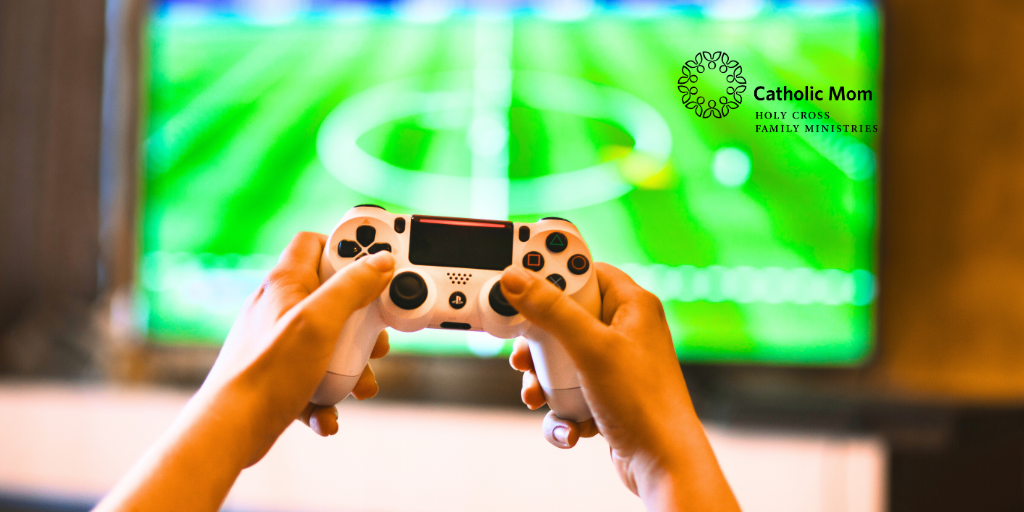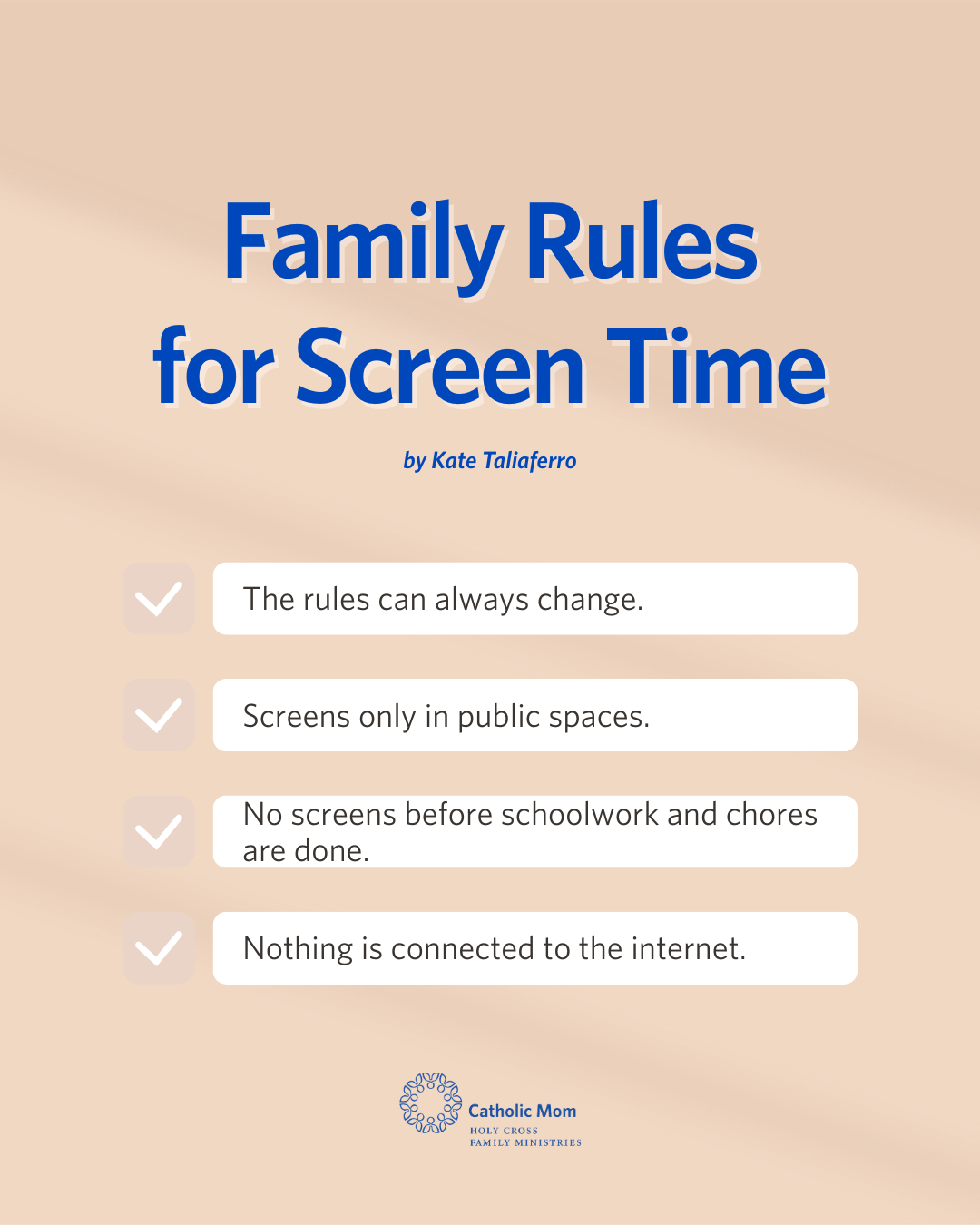
Kate Taliaferro, a homeschooling mom of 6, offers a look at her family’s methods for managing screens and gaming time.
Managing our kids' (and our own) screen time is a full-time job on top of all the other full-time jobs parents juggle in everyday life. There are so many conflicting opinions on how much is too much, but there is also a need to teach media literacy, as well as keep it educational. It could be good to know how to handle a game controller, for example, and on and on. It’s overwhelming.
I’m not going to say I have the answers, because I absolutely don’t. I am simply a homeschooling mom of six kids, ages 12, 13, 11, 8, 6, and 4. I’ve seen a thing or two and I’m also highly aware there is a lot I haven’t even grasped or tackled yet. One thing that has helped me in figuring out how to manage screens in our home was hearing how others have chosen to mange them in theirs. I’ve picked up some good ideas and gently laid aside others that would not fit our family and our values. I should also add that at this point, none of our children has a phone, so phone management isn’t part of our system.

We have continued to refine, add to, and subtract from our list of rules and routines around screens. If you are searching to redefine the roles of screens in your home, wonder how your methods compare, or are just curious about how one family chooses to handle them, I hope you find something worth considering in what follows.
Our Family’s Screen-Time Rules
The rules can always change.
Yes, I know this is hard, because it feels so good to finally get something figured out. Now we never have to think about it again because it’s a rule, like no dessert unless your plate is clean. Period, done, no matter your age, forever and ever, Amen. We have found that screens are a much harder animal to pin down. The rules about screens are meant to serve us and our family in this moment. Once they stop doing that, or are becoming a hinderance, it’s time to update them.
Screens in public spaces.
We have one TV in the living room. That’s it. If it’s on, anyone who walks in can watch it. The same with the primary desktop. It’s in the dining room in our current home, plugged into the wall. We do have two Chromebooks as well as an iPad, and those travel through the house. However, bedrooms are off limits unless special permission is requested and even then, doors stay open. Our kids do a lot of listening to podcasts and audiobooks. Headphones are not an option. I really can’t emphasize enough the importance of keeping screens and devices in the open at all times.
No screens before schoolwork and chores are done.
If the work isn't done, the screens don’t turn on.
Nothing is connected to the internet.
We do not allow online play with other people not inside our home. It’s just not something we are interested in figuring out at this moment, let alone managing.
Our Routine
Kids thrive on routines and rituals. In our present daily schedule, there needs to be a very high level of order when it comes to turning on screens. As I said previously, all schoolwork and chores have to be done before screens turn on. However, even this isn’t quite enough to ensure the privilege of screens isn’t abused.
A few years ago, I noticed that schoolwork was being rushed and in quite a few instances, even lied about, in order to get to the screen time faster. So, we instituted a “no screens before x time” rule. Up until this year, it was 2:30 PM when our daily quiet time ended. But I noticed over the summer that no one was eating an afternoon snack until well past 4 PM, and that was starting to mess with dinner appetites. This was because we also have a no food on the couch rule and with the lure of screen time, snack wasn’t being properly prioritized. This school year, we’ve modified our timing. Screens now can turn on at 3 PM. Quiet time still ends at 2:30 PM, but now there is a 30-minute buffer for snack.
Typically, screens are off by 4:30 PM. A show or part of a movie can be watched as a group from 7 to 7:30 PM before we start our bedtime rituals. That’s it; that’s all there is.

How It All Works
You might be thinking, this sounds great and all, but how does it really work? Aren’t they all fighting for turns? The beauty of the system is our minutes tracker. I’ll share a detailed look at the minutes tracker in part 2 of this article.
Share your thoughts with the Catholic Mom community! You'll find the comment box below the author's bio and list of recommended articles.
Copyright 2025 Kate Taliaferro
Images: Canva
About the Author

Kate Taliaferro
Kate Taliaferro is an Air Force wife and mom of 6. She has a Masters in Religious Education and tries to find God's presence in all parts of her day, be it cooking, cleaning or just the everyday ordinary. She enjoys homeschooling, stitching crafts and finding cheerios between the couch cushions. She blogs at Daily Graces.


.png?width=1806&height=731&name=CatholicMom_hcfm_logo1_pos_871c_2728c%20(002).png)
Comments